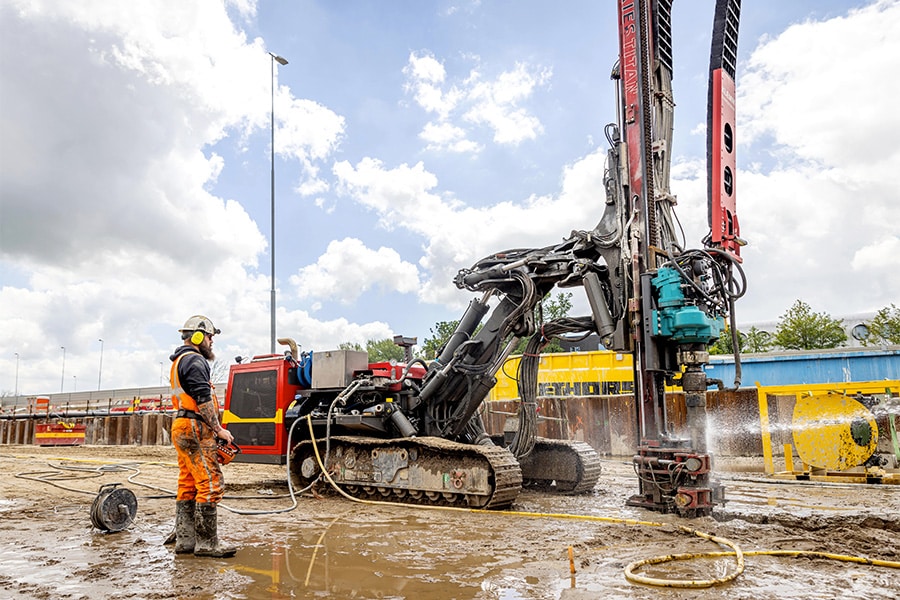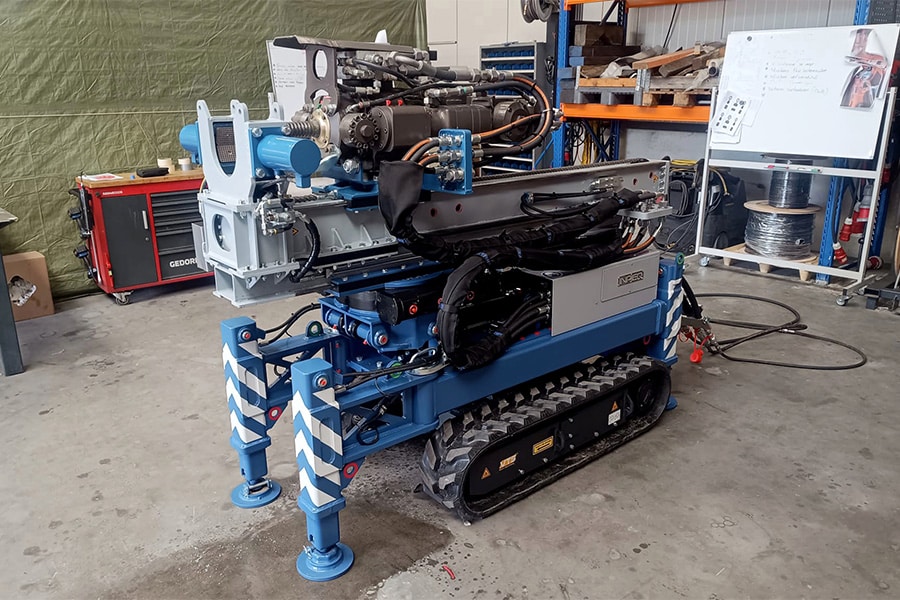
Economic sewer diversion and reinforcement
Part of Boskalis' assignment was to divert a section of it and make it sustainable. GW Leidingtechniek came up with an economic alternative to the initial program of requirements even during the tender.
GW Leidingtechniek is a familiar name to many water boards, drinking water companies and infrastructure contractors in our country. "We specialize in piping technology and especially in the field of wastewater and sewage," says Rense de Keijser, project manager at GW Leidingtechniek. "We almost always provide our work as a general contractor and, in recent years, increasingly in a construction team context. In this particular case, we were a subcontractor. After all, in addition to execution, we are also very strong in advice and (3D) design. That is also the reason why we have been involved by Boskalis from the tender for the new N69 for the design and construct of two existing pipeline sections."

Substantial savings
The construction of the new N69 touched the existing drainage system of De Dommel Water Board at two locations. "At Riethoven (Takkers intersection) we had to replace the existing alignment of some 80 meters for a sustainable alternative, while at the intersection with the N397 near Westerhoven the existing alignment had to be rerouted," explains De Keijser. "In the water board's initial program of requirements, temporary pumping plants would have to run for seven weeks to carry out the work. We came up with an alternative by first prefabricating and pressurizing the new pipelines as much as possible and then switching to the new routes in one 12-hour working day. In doing so, the old pipeline remained intact for as long as possible. In this way, we were able to significantly reduce costs and also protect the environment. The temporary pumping units only had to be rented and deployed for a limited number of days instead of many weeks."

Prefab
At the Takkers crossing near Riethoven, GW Leidingtechniek replaced the existing PVC pipeline with a new PVC free-fall sewer with casing pipe. De Keijser: "The old sewer line was deformed and oval rather than round.
We first completely prefabricated the new route, consisting of 80 meters of PVC pipe in a 315 millimeter diameter, 60 meters of which were in a GRP casing pipe around 530 millimeters. This was fully assembled, tested and pressurized on site, including the well. We then took the existing system out of service in one day, sawed it through, pumped it empty and connected the new route. Within eight hours, the sewer system was back in operation."

Inventive
The work at the bottleneck near Westerhoven was slightly more complex. De Keijser: "Here we realized a 1,200-millimeter GRP pipeline in a new route, including four wells and a number of ditch crossings. A temporary pump installation was then installed so that we could connect the new alignment of some 350 meters on either side to the existing system. Then we removed the old concrete pipes. Especially connecting the new route to the existing, seventy-year-old network requires a lot of inventiveness, especially since such materials are no longer available new. This is precisely where our strength lies, thanks to an enormous mountain of in-house knowledge and know-how. We always work thoroughly and leave nothing to chance. This commitment and solution-oriented thinking is ingrained in all layers of our company, not only in project management but also in our people out in the field."

Completely self-sufficient
In the field, by the way, it was a wet affair on the N69. "The groundwater was very high during the period in 2020 when we carried out our work," De Keijser reflects. "We therefore also had to provide drainage. Over a distance of only 100 meters, as many as ten pumps were running." GW Leidingtechniek is therefore completely self-sufficient. "We have our own drainage pumps, driving plates, dragline bulkheads, light trucks, HDPE welders with welding equipment, and we are certified, among other things, to install GRE pipelines, or fire-retardant GRP pipelines, and fire lines. In recent years, we have also been increasingly active in renovating sewer systems for which we have developed specific solutions, such as a renovation method without having to completely open up the network. Every x-number of meters we create an access location from which GRP ducts can be inserted into the existing system with very little disruption and inconvenience. The tubes are filled all around so that the network can withstand at least another 50 years."

"Coming up with innovative techniques or alternative methods is in our DNA," De Keijser summarizes. "We also proved that on the N69. Because infrastructure contractors as well as water boards and drinking water companies belong to our client group, we always communicate directly with the stakeholders. Boskalis did not have to stand between them as an 'intermediary' in this case. In this way we skip a number of steps in the design process and that works very pleasantly. We were able to completely unburden Boskalis in terms of our scope on the N69."



